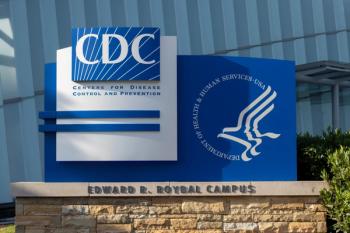
Managed Care Contract Changes Provide Opportunities for Consultant Pharmacists
Recent changes to reimbursement algorithms create new opportunities for consultant pharmacists to strengthen their contributions to managed care contracts.
Recent changes to reimbursement algorithms create new opportunities for consultant pharmacists to strengthen their contributions to managed care contracts.
“Reimbursement contracts were previously long-term agreements, with reimbursement escalators built in each year,” explained Les Cavicchi, MPA, NHA, executive vice president of Greater Boston Urology, at the 2015 American Society of Consult Pharmacists Forum in Baltimore, Maryland. “However, many plans are currently pushing towards shorter agreements with diminishing rates.”
Cavicchi said many previously integral elements of reimbursements contracts, including fee-for-service models, are concurrently being eliminated.
“One day, we'll take our grandchildren to see the fee-for-service exhibit at the Smithsonian,” he quipped.
Even though Cavicchi described reimbursement as “a little bit like roulette these days,” the new models ultimately place a significant emphasis on preventing disease, controlling cost, and increasing patient satisfaction. This creates opportunities for consultant pharmacists to receive greater reimbursement for their services by helping to reduce hospital readmissions and improve medication adherence and patient outcomes.
“Any time a readmission is prevented, a minimum of $10,000 to $15,000 is saved,” Cavicchi said. “If your actions can lead to these improved outcomes, then the payers will recognize your level of expertise and reimburse you accordingly.”
He encouraged consultant pharmacists to be mindful of changes to reimbursement algorithms throughout their daily practice.
“If you knew how you were being paid, would it change your decision making?” Cavicchi asked. “The bottom line is, if your consultant pharmacy services are contributing to shorter lengths of stay, improving clinical outcomes, generating cost savings or avoidance, and improving patient satisfaction, then you win.”
To achieve these goals, Cavicchi said consultant pharmacists can communicate with the physician and insurance plan case manager concerning polypharmacy reduction and generic alternatives, in addition to regularly meeting with the interdisciplinary care team and having a pre-established script for patient and family interaction.
He noted pharmacists should also be aware of patient safety indicators (PSIs) from the Agency for Healthcare Research and Quality, which include:
· PSI #03 Pressure ulcer rate
· PSI #06 Iatrogenic pneumothorax rate
· PSI #07 Central venous catheter-related bloodstream infection rate
· PSI #08 Postoperative hip fracture rate
· PSI #09 Postoperative hemorrhage or hematoma rate
· PSI #10 Postoperative physiologic and metabolic derangement rate
· PSI #11 Postoperative respiratory failure rate
· PSI #12 Postoperative pulmonary embolism or deep vein thrombosis
· PSI #13 Postoperative sepsis rate
· PSI #14 Postoperative wound dehiscence
· PSI #15 Accidental puncture or laceration rate
“Depending upon which aspect of the continuum you are engaged in, the consultant pharmacist must contribute to the achievement of metrics and goals,” Cavicchi said.
Senior Editor Katie Eder contributed to this article.
Newsletter
Stay informed on drug updates, treatment guidelines, and pharmacy practice trends—subscribe to Pharmacy Times for weekly clinical insights.




















































































































































































































